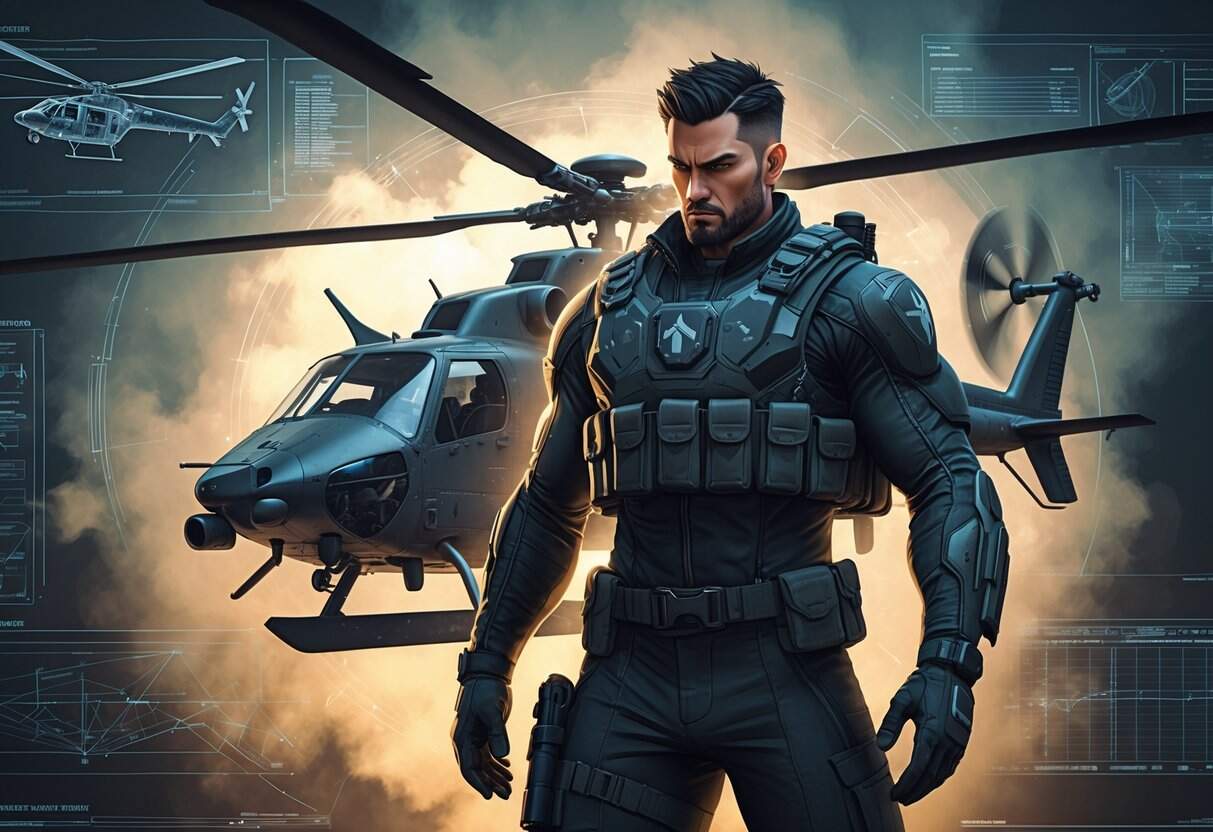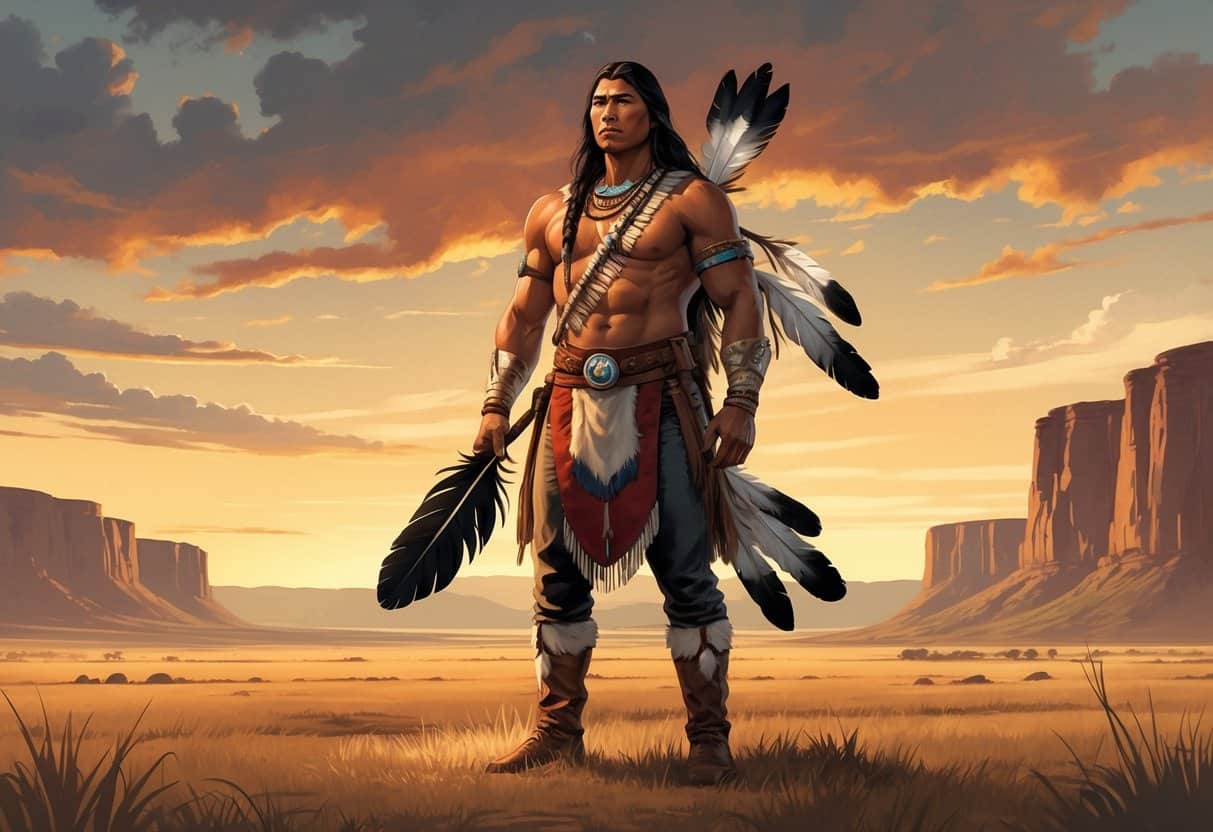Black Hawk was a Native American warrior and leader who fought to protect his people’s land and way of life.
Understanding his mindset reveals how he balanced being both a fighter and a protector during chaotic times.
His story highlights the tough challenges Native Americans faced during the era of American expansion.

You’ll get a sense of Black Hawk’s beliefs, his leadership through war, and how his experiences shaped his actions.
He made tough choices—alliances with the British, resistance during the Black Hawk War—that reveal the man behind the “warrior” label.
Key Takeways
- Black Hawk fought to defend his people’s land and culture.
- His leadership was shaped by tough decisions during war and peace.
- His story helps you understand the impact of that time on Native American history.
Black Hawk: Life and Leadership

Let’s dig into Black Hawk’s background, how he became a chief of the Sauk tribe, and the relationships that shaped his role.
These early influences turned him into a leader and warrior during intense conflict with American settlers.
Early Years and Ancestry
Black Hawk was born into the Sauk tribe, part of the Thunder Clan.
The clan system mattered a lot, connecting him to animal symbols like the deer, wolf, and otter—each with its own spiritual meaning.
These animals weren’t just symbols; they reflected qualities that shaped Black Hawk’s character and leadership.
From childhood, he showed bravery and skill in hunting and war.
His upbringing taught him the values of his people and the weight of protecting their land.
You can see how his early life set him up to lead when things got rough.
Rise to Chief and the Sauk Tribe
Black Hawk became a war leader for the Sauk tribe after earning respect through courage and wisdom.
His leadership faced its biggest test as American settlers pushed onto Native lands.
The Sauk tribe was pressured to give up their territory, but Black Hawk stood firm.
He wasn’t just a fighter; he was also a medicine man, respected for his healing knowledge and spiritual insight.
This blend of physical and spiritual leadership helped unify his people during the Black Hawk War of 1832.
Family, Friendship, and Marriage
Black Hawk’s personal life was tightly woven into his tribe and neighboring groups.
Marriage played a big role in building alliances and social bonds.
He worked to keep strong friendships within his tribe and with other Native groups, which helped his people get through tough times.
These relationships weren’t only about friendship—they played into diplomacy and peace efforts.
His family and close friends gave him support as he faced ongoing pressure from settlers and the U.S. government.
Historical Context: The Black Hawk War and Beyond
To really get the impact of the Black Hawk War, it helps to look at why it started, the major battles, and how it changed Native and settler relationships in Illinois and the wider Midwest.
Causes and Key Events
The Black Hawk War broke out in 1832 because Black Hawk and his followers wanted to reclaim land in Illinois.
Years earlier, the Treaty of St. Louis had forced tribes like the Sauk and Fox to give up land west of the Mississippi.
Black Hawk rejected this treaty and led a “British band” of warriors back across the river.
Settlers and the Illinois militia saw this as a threat.
Tensions rose as white settlers moved onto tribal land.
Black Hawk’s crossing into Illinois set off the conflict.
The fight over land, and the memory of earlier wars like the War of 1812, created the backdrop for this short but fierce war.
Major Battles and Skirmishes
A handful of battles defined the Black Hawk War.
The first was Stillman’s Run, where the Illinois militia was caught off guard and defeated.
This loss rattled settlers and led to a stronger military response.
Other big fights included the Battle of Wisconsin Heights, with Black Hawk’s band trying to escape under heavy attack.
The final clash, the Battle of Bad Axe, ended in heavy losses for Black Hawk’s people near the Mississippi.
There were also skirmishes at Campbell’s Island and Credit Island, showing how the conflict spread out across the region.
Aftermath and Implications
After the war, many Native Americans were forced off their lands.
Black Hawk was captured and imprisoned.
The U.S. gained control over Illinois and the surrounding areas.
Indigenous resistance in the region faded, and settlers moved in.
Tribes like the Potawatomi and the Fox lost much of their political power.
The Proclamation of 1763, which had once limited westward settlement, was basically ignored as Native people were pushed further from their homes.
This war fits into the bigger picture of ongoing struggles over land and sovereignty between Native Americans and U.S. settlers.
It was a turning point for control of the Midwest.
Inside the Mind of a Warrior: Black Hawk’s Worldview
Black Hawk’s deep spiritual beliefs shaped his every move.
His leadership style and tactics show a man trying to balance courage, tradition, and the political chaos of a changing world.
Beliefs and Relationship with the Great Spirit
Black Hawk believed fiercely in the Great Spirit, who guided every part of his people’s lives.
He saw the Great Spirit as the source of power and protection in both hunting and battle.
He often talked about signs—like the flight of an arrow—that revealed the Great Spirit’s will.
In his autobiography, Black Hawk described spiritual visits and visions that gave him strength.
These experiences made him sure his actions were just.
Hunting wasn’t just survival; it was sacred, tied to honor and respect for what the Great Spirit provided.
Leadership Philosophy and Strategies
Black Hawk’s leadership was rooted in bravery and loyalty.
He led from the front, fighting alongside his warriors.
He believed the “code of being a warrior” meant skill in battle and a willingness to die for his people.
He often disagreed with leaders like Keokuk, who wanted peace and cooperation.
Black Hawk’s strategy mixed traditional warrior skills with political awareness.
He knew alliances, like those with the British, were key to resisting expansion.
Even in negotiations at places like Jefferson Barracks, Black Hawk stayed firm about protecting his tribe’s land.
Legacy and Cultural Impact
Black Hawk’s story changed how Native resistance is remembered.
His life after the Black Hawk War and his impact on other Native leaders show the strength and hardships Native people faced during U.S. expansion.
After the War: Life, Captivity, and Narrative
After the 1832 Black Hawk War, Black Hawk was captured and held by American forces.
He wasn’t killed or forced west like so many others—his status probably saved him, and he became a symbol meant to discourage further uprisings.
During captivity, Black Hawk gave speeches and told his story, helping outsiders see things from a Native perspective.
He criticized leaders like Andrew Jackson for harsh policies.
His narrative became a key source for understanding Native struggles and his vision for peace, standing in stark contrast to aggressive U.S. expansion.
His time in captivity gave him space for reflection.
His words shaped how people see sovereignty, tribal rights, and the impact of war.
Through his story, you get a glimpse of how Native Americans tried to survive losing land and power, all while holding onto their culture.
Influence on Native American Leaders
Black Hawk inspired a whole generation of Native leaders who tried to push back against U.S. oppression. Figures like Crazy Horse and Geronimo saw him as proof that you could fight for land and dignity, even when the odds looked terrible.
He changed how people thought about Native leadership, in a way that reminds me of Tecumseh, who tried to unite tribes against settlers. Black Hawk, like Sequoyah—who worked to keep Native languages alive—showed that leadership isn’t just about land. Sometimes, it’s about protecting your culture, too.
You can definitely draw a line from Black Hawk’s legacy to the later struggles of the Oglala Lakota and Cochise out West. His resistance has a lot in common with leaders who faced white settlers pushing deeper into tribal lands, often with the backing of the Indian Agency or military outfits like the Corps of Discovery.